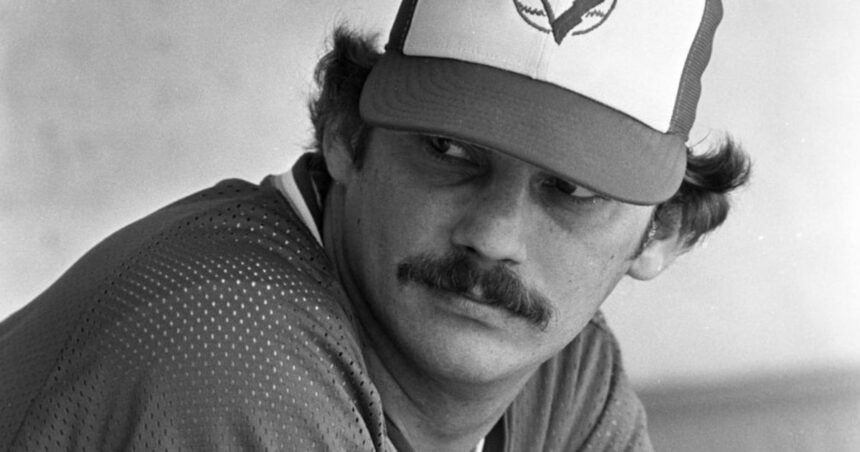Jim Clancy, the tall right-hander whose steady presence anchored the Toronto Blue Jays’ rotation during the franchise’s formative years, died Tuesday at age 69.
Standing on the mound at Exhibition Stadium in the late 1970s and early ’80s, Clancy embodied resilience during an era when the expansion Blue Jays were finding their footing. His death leaves many in Toronto’s baseball community reflecting on his contributions to the team’s foundation.
“Jim showed up every fifth day and gave everything he had, even when we weren’t very good,” remembers Pat Gillick, the Blue Jays’ general manager during Clancy’s tenure. “He never complained about run support or made excuses. He just competed.”
Clancy joined Toronto in the 1976 expansion draft after beginning his career in the Texas Rangers organization. He quickly became a fixture in the rotation, starting the second game in franchise history on April 9, 1977. While that outing against the Chicago White Sox resulted in a loss, it marked the beginning of a Blue Jays career that would span 12 seasons.
By the numbers, Clancy’s career might not jump off the page – he compiled a 140-167 record with a 4.23 ERA across 17 major league seasons. But context matters. For much of his time in Toronto, he pitched for developing teams that struggled to provide offensive support or defensive stability behind him.
His finest season came in 1982 when he earned his lone All-Star selection. That year, Clancy won 16 games with a 3.71 ERA for a Blue Jays team that finished 78-84. He logged 266.2 innings – a workload nearly unimaginable for modern pitchers.
“We relied on Jim to be our workhorse,” says former Blue Jays catcher Ernie Whitt, who caught many of Clancy’s starts. “He wasn’t flashy, but he had this sneaky fastball and knew how to set up hitters. What I remember most was how he’d battle even when he didn’t have his best stuff.”
The Chicago native possessed a deceptive delivery that helped his fastball play up, complemented by a slider that became his out pitch. At 6-foot-4, he used his height to create a downward plane that generated ground balls when he needed them most.
Former teammate Dave Stieb, who eventually became the ace of those Blue Jays staffs, credited Clancy with showing him how to navigate the big leagues. “Jim taught me about preparation and maintaining focus throughout a long season,” Stieb said in a statement released through the team. “He showed all of us young guys what it meant to be a professional.”
Clancy was part of the 1985 Blue Jays team that captured the franchise’s first division title, though his role had diminished by then. After the 1988 season, he signed with Houston as a free agent, where he transitioned to relief pitching. He finished his career with the Astros and Atlanta Braves, retiring after the 1991 season.
Beyond the statistics, those who knew Clancy speak of his character. “Jim was one of those guys who made the clubhouse better,” recalls Lloyd Moseby, the Blue Jays’ center fielder during the 1980s. “He had this dry sense of humor that kept things loose, but when it was his turn to pitch, nobody was more serious.”
In retirement, Clancy maintained connections to baseball through coaching and occasional appearances at Blue Jays alumni events. At the team’s 40th anniversary celebration in 2016, he received a warm ovation that reflected fans’ appreciation for those who wore the uniform during less successful times.
The Blue Jays organization announced plans to honor Clancy during their upcoming homestand with a moment of silence and commemorative jersey patch. Team president Mark Shapiro called him “a vital piece of Blue Jays history whose contributions helped build the foundation for the success that would follow.”
Clancy’s family has requested privacy but issued a statement thanking fans for their support. “Jim cherished his time in Toronto and often spoke about how special it was to be part of building something from the ground up,” the statement read. “The connections he made with teammates and fans meant everything to him.”
As the Blue Jays celebrate their 45th anniversary this season, Clancy’s passing serves as a reminder of those who laid the groundwork for what would eventually become a championship organization. Though he departed before the World Series victories in 1992 and 1993, his imprint on the franchise remains significant.
“Sometimes we focus too much on the teams that win it all,” says broadcaster Buck Martinez, who caught and later managed the Blue Jays. “But guys like Jim Clancy deserve just as much recognition. They weathered the tough years and helped create the culture that winning teams are built on.”
In Toronto’s baseball history, Jim Clancy’s name may not carry the marquee value of Roberto Alomar or Joe Carter, but for those who witnessed the franchise’s evolution, his contribution remains unmistakable – a steady presence who took the ball every fifth day and gave a young team everything he had.






